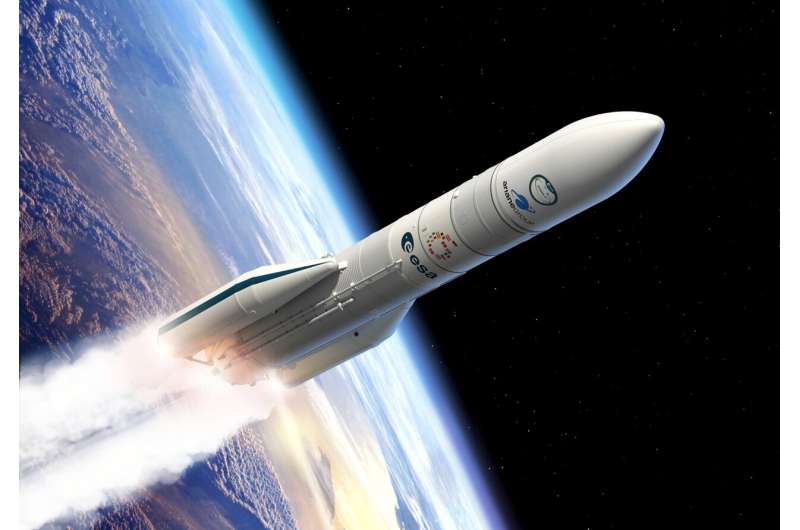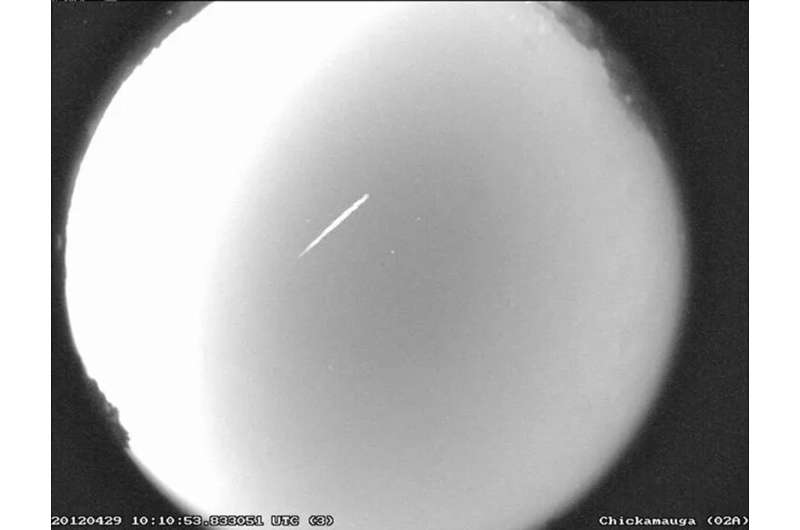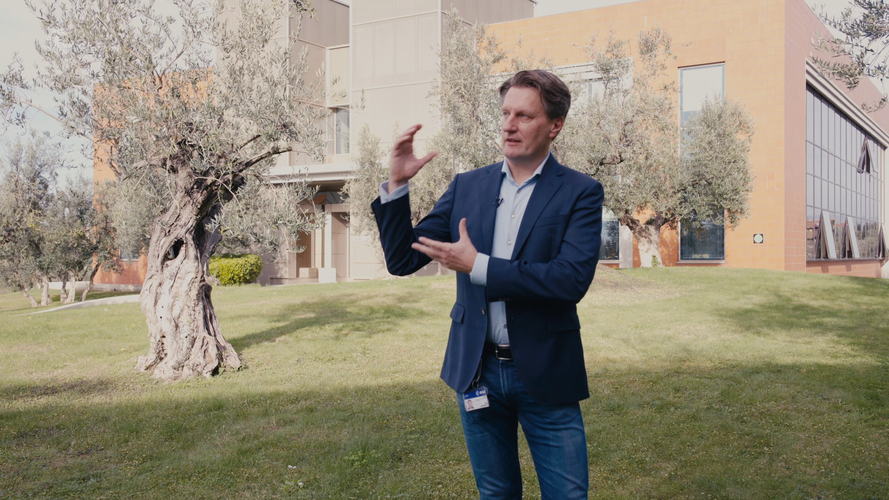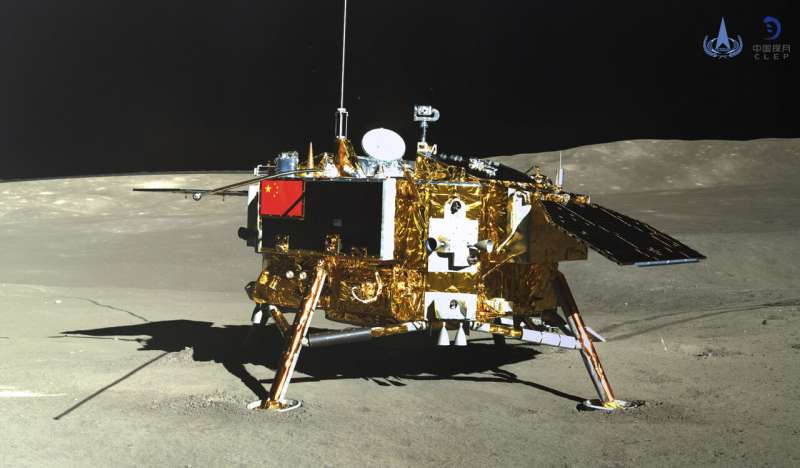
Copernical Team
Ariane 6 launches: Exolaunch's EXOpod Nova

Europe's newest rocket soon launches, taking with it many space missions each with a unique objective, destination and team at home, cheering them on.
The Eta Aquarid meteor shower, debris of Halley's comet, peaks this weekend. Here's how to see it

The Eta Aquarid meteor shower, remnants of Halley's comet, peaks this weekend. And with just a waning crescent moon in the sky, it should be visible.
The Eta Aquarids occur every year in early May. This year's peak activity happens early Sunday with an expected 10 to 30 meteors visible per hour in the Northern Hemisphere.
Meet the team behind EarthCARE
 Video:
00:04:54
Video:
00:04:54
As we approach the launch of ESA’s EarthCARE mission, we caught up with some of the scientists, engineers and experts behind the mission.
With the climate crisis increasingly tightening its grip, ESA’s Earth Cloud Aerosol and Radiation Explorer mission (EarthCARE) will shed new light on the complex interactions between clouds, aerosols and radiation in Earth’s atmosphere.
EarthCARE is the largest and most complex Earth Explorer mission. It comes at a critical time in the development of kilometre-scale resolution, global climate models and will provide an important contribution to an improved understanding of cloud convection and its role in Earth’s
China sends a probe to get samples from the less-explored far side of the moon

BAE Systems to construct new atmospheric sensor for NOAA's GeoXO satellites
 BAE Systems (LON: BA) has been tasked by NASA to develop the Atmospheric Composition instrument (ACX) for deployment on NOAA's upcoming Geostationary Extended Observations (GeoXO) satellite constellation. This initiative is part of an effort to enhance Earth observation capabilities previously established by the Geostationary Operational Environmental Satellites-R series (GOES-R).
The GeoX
BAE Systems (LON: BA) has been tasked by NASA to develop the Atmospheric Composition instrument (ACX) for deployment on NOAA's upcoming Geostationary Extended Observations (GeoXO) satellite constellation. This initiative is part of an effort to enhance Earth observation capabilities previously established by the Geostationary Operational Environmental Satellites-R series (GOES-R).
The GeoX Millennium Space Systems secures $414 million contract from Space Development Agency
 Millennium Space Systems, a subsidiary of Boeing [NYSE: BA], has been awarded a contract potentially worth $414 million by the Space Development Agency. The contract involves the delivery of the Fire-control On Orbit-support-to-the-war Fighter, known as FOO Fighter or F2. The company will act as the end-to-end operational prime, responsible for deploying a constellation of eight satellites along
Millennium Space Systems, a subsidiary of Boeing [NYSE: BA], has been awarded a contract potentially worth $414 million by the Space Development Agency. The contract involves the delivery of the Fire-control On Orbit-support-to-the-war Fighter, known as FOO Fighter or F2. The company will act as the end-to-end operational prime, responsible for deploying a constellation of eight satellites along Satellogic unveils expansive high-resolution image dataset for AI training
 Satellogic Inc. (NASDAQ: SATL) has made public a substantial open dataset from its collection. This dataset is composed of approximately 3 million unique location images, doubling to 6 million with revisits, and is designed to enhance the training of AI foundation models. Each 384x384 pixel image contributes to the overall 900 Gigapixels, covering diverse land uses, objects, geographies, and sea
Satellogic Inc. (NASDAQ: SATL) has made public a substantial open dataset from its collection. This dataset is composed of approximately 3 million unique location images, doubling to 6 million with revisits, and is designed to enhance the training of AI foundation models. Each 384x384 pixel image contributes to the overall 900 Gigapixels, covering diverse land uses, objects, geographies, and sea SpaceX completes bicoastal launches, adding to Starlink's megaconstellation
 SpaceX launched another group of 23 satellites from Kennedy Space Center on Thursday night via a Falcon 9 rocket, adding to the Starlink megacluster of Internet satellites now in low-Earth orbit.
The launches have become nearly routine as have the return of reusable fuel cell booster rocket to a drone awaiting below.
Thursday night, the booster, guided by short rocket bursts, returne
SpaceX launched another group of 23 satellites from Kennedy Space Center on Thursday night via a Falcon 9 rocket, adding to the Starlink megacluster of Internet satellites now in low-Earth orbit.
The launches have become nearly routine as have the return of reusable fuel cell booster rocket to a drone awaiting below.
Thursday night, the booster, guided by short rocket bursts, returne China launches first probe to collect samples from far side of Moon
 China launched a probe on Friday to collect samples from the far side of the Moon, a world first as Beijing pushes ahead with an ambitious programme that aims to send a crewed lunar mission by 2030.
A rocket carrying the Chang'e-6 lunar probe blasted off from the Wenchang Space Launch Centre in southern China's Hainan province just before 5:30 pm (0930 GMT), AFP journalists near the site s
China launched a probe on Friday to collect samples from the far side of the Moon, a world first as Beijing pushes ahead with an ambitious programme that aims to send a crewed lunar mission by 2030.
A rocket carrying the Chang'e-6 lunar probe blasted off from the Wenchang Space Launch Centre in southern China's Hainan province just before 5:30 pm (0930 GMT), AFP journalists near the site s Ariane 6 launches: Exolaunch’s EXOpod Nova

Europe’s newest rocket soon launches, taking with it many space missions each with a unique objective, destination and team at home, cheering them on. Whether launching new satellites to look back and study Earth, peer out to deep space or test important new technologies in orbit, Ariane 6’s first flight will showcase the versatility and flexibility of this impressive, heavy-lift launcher. Read on for all about EXOpod Nova, then see who else is flying first.

